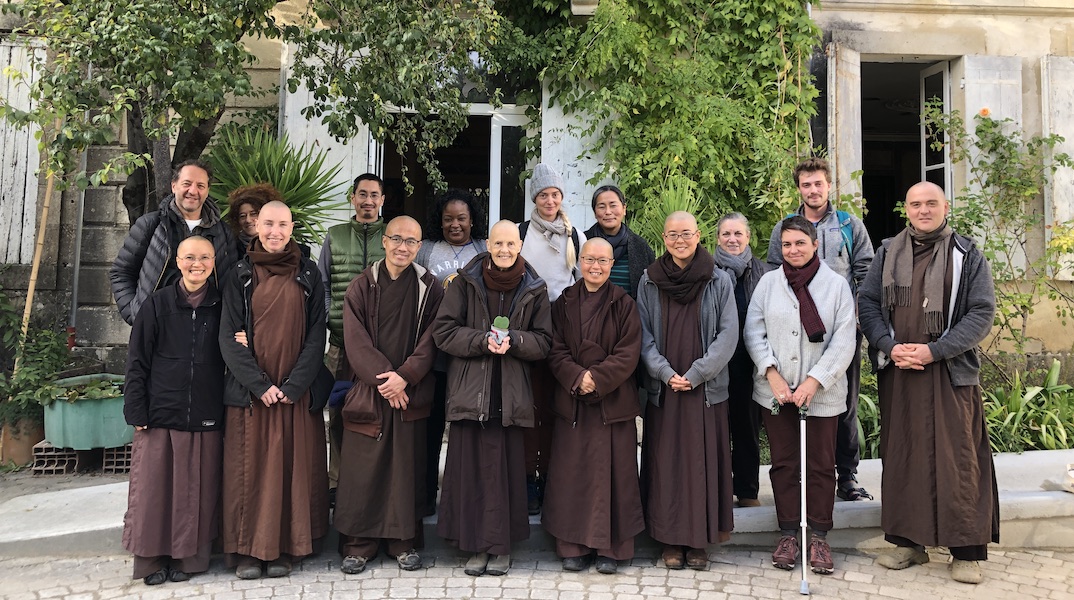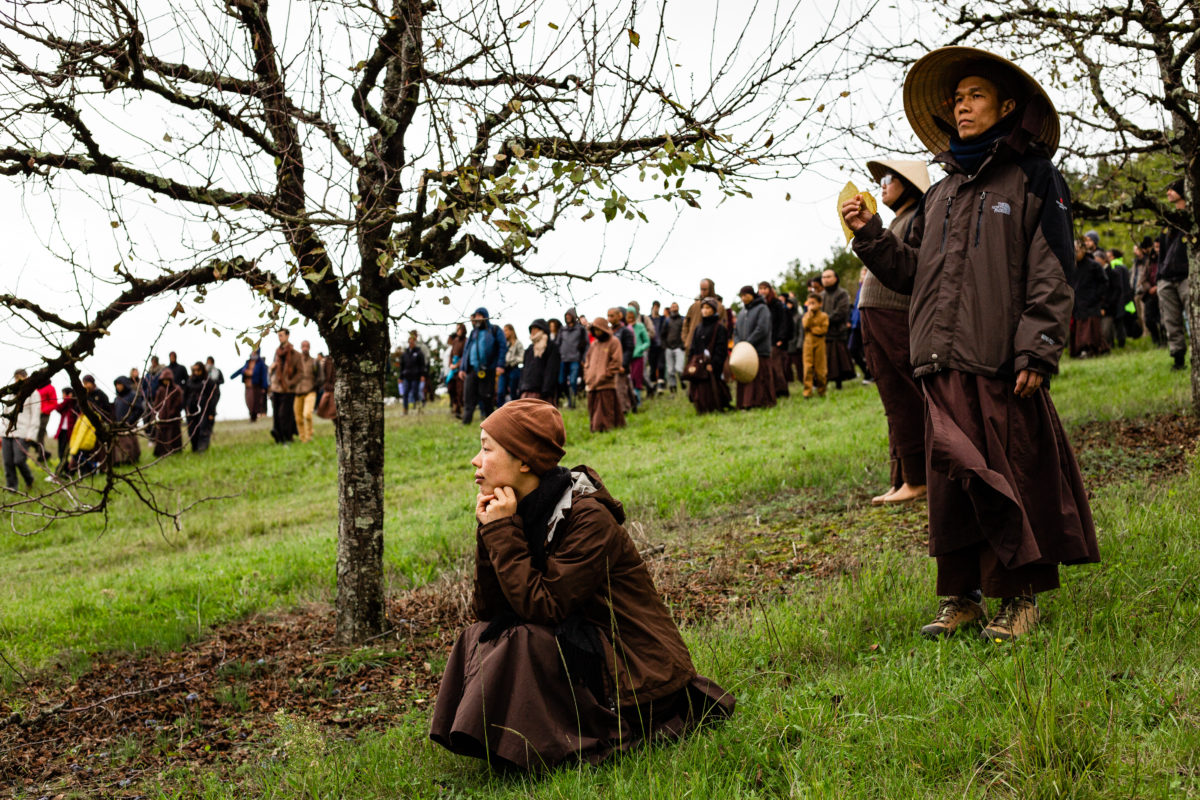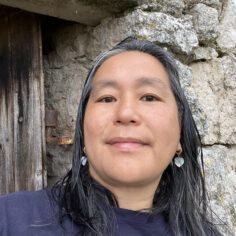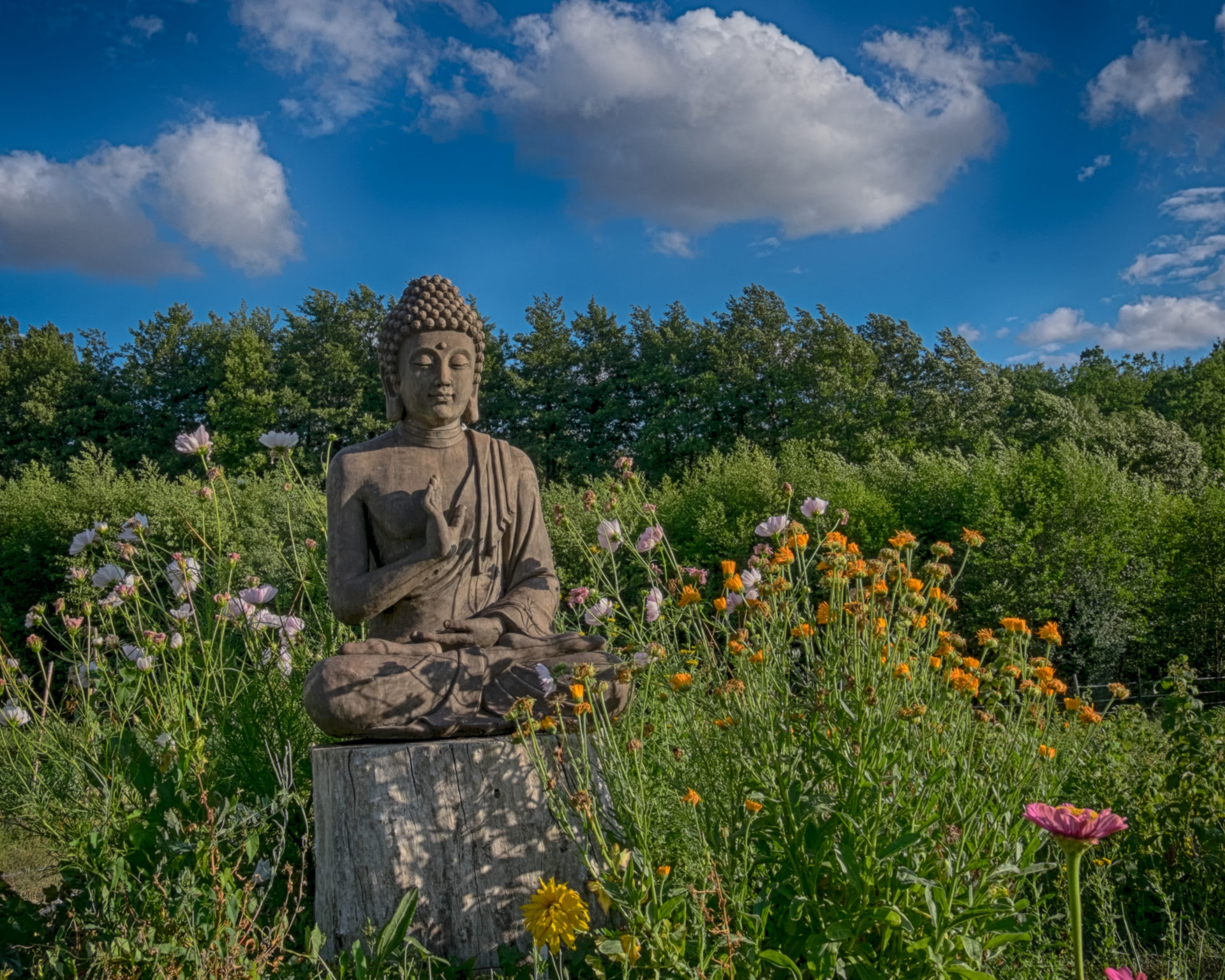Interview with Hisae Matsuda

Front row: Sister Hoan Nghiem, Vietnamese editorial team; members of the Plum Village editorial team Sister Hien Nghiem, Brother Phap Dung, Sister Chan Duc,
Interview with Hisae Matsuda

Front row: Sister Hoan Nghiem, Vietnamese editorial team; members of the Plum Village editorial team Sister Hien Nghiem, Brother Phap Dung, Sister Chan Duc, Sister Lang Nghiem, Sister Trai Nghiem; Terri Saul, art and production director; and Brother Phap Linh, also a Plum Village editorial team member
Hisae Matsuda, Perfect Absorption of the Heart, has been publisher of Parallax Press since September 2019. In an interview during the summer of 2019 at Plum Village, prior to stepping into the publisher role, Hisae shares about her role at Parallax Press with Annica Bauer, a member of the Wake Up International coordinator team.
Annica Bauer: Hisae, what’s your experience of reading the Dharma for a living?
Hisae Matsuda: It’s such a joy to be able to do this. The experience of reading Dharma is a great pleasure and a privilege to do for a living. The editing work is to help the Dharma to be expressed as clearly as possible. It is an exercise of judgment. It could be something subtle. Sometimes it’s just substituting a different phrase that may convey the Dharma more skillfully.
Sometimes the process of getting to where the words on the page are flowing takes time. This is not without its own kind of pleasure; it’s a bit like solving a puzzle. Sometimes I make mistakes, and I have to be willing to listen to critique and be humble. I’m learning through making mistakes. I also have to work with the author. Large or small, editing is often a question of applying changes that authors feel are appropriate.
Thich Nhat Hanh’s Dharma talks serve as the foundation for many of his books. Helping to adapt the talk for the printed page is an art I’m still learning.
AB: What’s your editing process from Thay’s Dharma talks into a book?
HM: How we edit depends on the kind of book. Short books, such as the “How to” series, pull text from many of Thay’s Dharma talks, while longer books go deeper into one particular set of talks.
I can talk a little bit about what I’ve observed with the “How to” series. When I first saw them in a bookstore, I thought, “Oh, they’re just little pieces. How can you absorb teachings with such small moments?“ Since joining Parallax and actually reading them [laughs], I was humbled to realize that there’s a lot of depth in these small fragments. Sometimes a few words contain just what we need to touch. Thay is all the time teaching through touching something within us. He doesn’t use many words, so what he says connects with us deeply.
For the process of creating a “How to” book, the editors of Parallax Press and Plum Village work together to define the title, which sets the tone and subject. Then Terry Barber, one of our long-time editors, and her wonderful monastic counterpart find Thay’s writings on those topics and bring them together into a manuscript. The “How to” books are not just for the Sangha. We can find them at the airport, at Urban Outfitters [laughs], or on the bookshelves of people who have never set foot in Plum Village and maybe have never attended a Dharma talk. But the topic appeals to them. How to Sit, How to Walk, How to Eat were the first practical books, and more recently we published How to Love, How to Fight, and How to See.
We’re trying to find topics that appeal to people and that are appropriate for everyday life. Right now, eight “How to” books have been published so far. [Number eight is How to Connect, which will be available in July 2020.] Parallax editors have been talking with Plum Village editors to come up with the final two topics. Then the series will end, because we can’t continue forever [laughs]. Impermanence.

AB: Parallax Press, the publishing house cofounded by Thay, is deeply rooted in Thay’s practice of mindfulness. You’re also faced with the need to meet publishing deadlines. How do you practice this intersection of the practice and the reality of the publishing world?
HM: Well, I’ll be honest. At times I experience frustration at my inability to adapt to new ways of working. However, Parallax has been around for thirty-four years, and they’ve worked out some things. I think we hold—compared to other office environments I’ve worked in—quite a close atmosphere. We don’t necessarily know everything about each other’s lives, and we’re not in a group therapy session every day. For a professional environment, we try to be kind to each other and communicate well. We try to respect each other’s feelings, give space for feelings, and encourage people to take care of themselves and their feelings.
In our five working days a week, we start the morning with a short and informal sit. We take turns to invite the bell. Sometimes someone will prepare something they want to share from one of Thay’s books that seems relevant for the day. Then we’ll sit for ten minutes, which doesn’t seem very long, but it infuses the whole day with an energy that helps us.
After the ten-minute sit, sometimes the bell master will ask a question of the day, or they’ll just ask us to go around the group checking in to see how we are doing. Sometimes it could be more of a project-based check-in. “Which books are coming in?” Sometimes it’s like, “Have you seen a good film lately that you would recommend?” It can be conversational, but it’s a way of our touching base with each other and with the practice. That’s one of the things we like to do.
As to how our process affects deadlines, we need to improve [laughs]. That’s one of my sources of frustration. I used to work at a press that had an A+ rating from our distributor in terms of everything being on time: all the marketing materials and the book covers were delivered on time. We’re getting there at Parallax, and I believe we can get there with a mindful approach. We don’t have to change. We don’t have to yell at each other, blame each other, or make the other person wrong for not delivering.
We don’t need to do that; we will not do that. We would rather be late on something than push and force. That’s the choice we are currently making, but I think we can improve by recognizing we have an aspiration to reach certain goals [laughs].
We have a Play Day once a quarter where we just do something fun. Once a month, we hold a Day of Mindfulness to work together in silence. It’s actually a very productive day. We don’t have meetings, and we get a lot of focused work done. We’ll work in the morning in silence, and then we’ll eat lunch together mindfully; the first twenty minutes of the meal will be in silence. I’m thinking we should have Days of Mindfulness more often, like once a week!
The practices—loving speech, deep listening, mindful sitting, mindful breathing, mindful eating in community—that Plum Village has developed work really well in the workplace. I feel close to my coworkers as a person, as a human being, and not just as an editor or as a “resource” like in other companies. I’ve heard managers at other workplaces talk about their staff as resources for what they can do. It’s as if they’re not people. At Parallax, our skills and experience are resources, but we always remember we are human beings.


